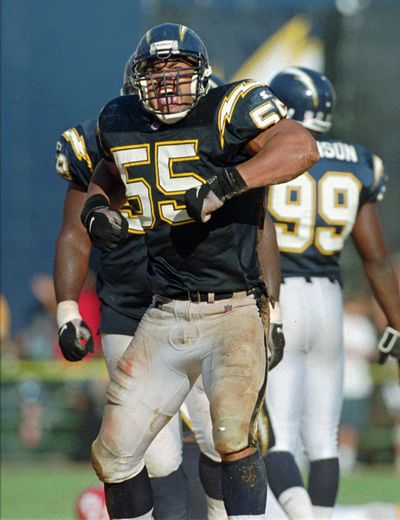Concussions: Terrible fate awaited many

A medical condition known as Chronic Traumatic Encephalopathy (CTE) is an area of study that has revealed startling insights over the past half-dozen years.
A progressive, degenerative disease of the brain, CTE is found in athletes and others who have suffered repeated trauma to the head. Initially it was thought to be the result of repeated concussions, but it now includes repeated blows that may never have resulted in a concussion. Symptoms include memory loss, aggression, confusion, dementia, depression and other symptoms similar to Alzheimer’s disease.
The biggest problem with diagnosing CTE is that it can only be definitively done so during an autopsy. Thus far, more than three dozen former players from the National Football League, the National Hockey League and professional wrestling have been diagnosed posthumously. It’s strongly suggested to have been present in dozens more, based on symptoms players are known to have had after their playing careers were finished, and tests on living players show signs of a specific protein known to be linked to the disease.
Former Pittsburgh Steeler center and Pro Football Hall of Fame member Mike Webster was the first to be diagnosed with CTE. Following his stellar career in football, Webster suffered from amnesia, dementia and depression in addition to acute bone and muscle pain. He lived out of his pickup truck or in train stations between Wisconsin and Pittsburgh. When he died of a heart attack in 2002, he was just 50 years old.
Baltimore Colts Hall of Fame tight end John Mackey suffered from dementia during his post-football life. His autopsy confirmed CTE. Former NHL standouts Bob Probert (Detroit Red Wings and Chicago Blackhawks forward who died at 45 in 2010) and Rick Martin (part of Buffalo’s fabled French Connection line who died at 59 in 2011) also were diagnosed with CTE.
Former Vancouver Canucks enforcer Rick Rypien, cousin of Spokane’s former NFL quarterback Mark Rypien, played parts of six seasons in the NHL, due in large part to his hitting and fighting ability. Struggling with clinical depression throughout his career, his suicide has been linked to CTE.
There is a growing list of players who have committed suicide who have been diagnosed with CTE. Former Chicago Bears safety Dave Duerson committed suicide in 2010 at age 50, leaving a note that his brain be donated to research, where the diagnosis was confirmed. Linebacker Junior Seau was diagnosed with CTE after he committed suicide in May 2012. Same with Kansas City Chiefs linebacker Jovan Belcher, who committed suicide in the team parking lot after murdering his girlfriend, the mother of his three-month-old daughter. CTE also was diagnosed in the brain of professional wrestler Chris Benoit, who murdered his wife and son before committing suicide in 2007, although it originally was attributed to extended use of anabolic steroids.
The case of Owen Thomas takes the tragedy of CTE to new levels with the simple fact that he never was diagnosed with a concussion.
A popular, 6-foot-2 junior lineman at the University of Pennsylvania, who had just been elected team captain, Thomas was never diagnosed with depression. He hanged himself in his off-campus apartment in 2010 after suffering what friends and family described as “an emotional collapse.”
CTE was discovered during his autopsy by Dr. Ann McKee, a neoropathologist at Boston University and the Co-Director of the Center for the Study of Traumatic Encephalopathy (CSTE) and a leading expert in the study of accumulated brain trauma.
“This finding emphasizes that the early stages of this disease can start at young ages even in the absence of well-documented concussions,” McKee said in a university press release. “It’s more evidence that we urgently need more research on CTE to fully understand the severity and frequency of brain trauma that can trigger this response, so that we can implement rule and equipment changes to protect our athletes.”
In a direct effort to deal with the cumulative effect that hitting has on the brain, the NFL has begun limiting the amount of contact teams are allowed to have during practices. The nine-week offseason practice program each team is allowed to conduct now is held without pads and without live hitting drills.
Steve Christilaw